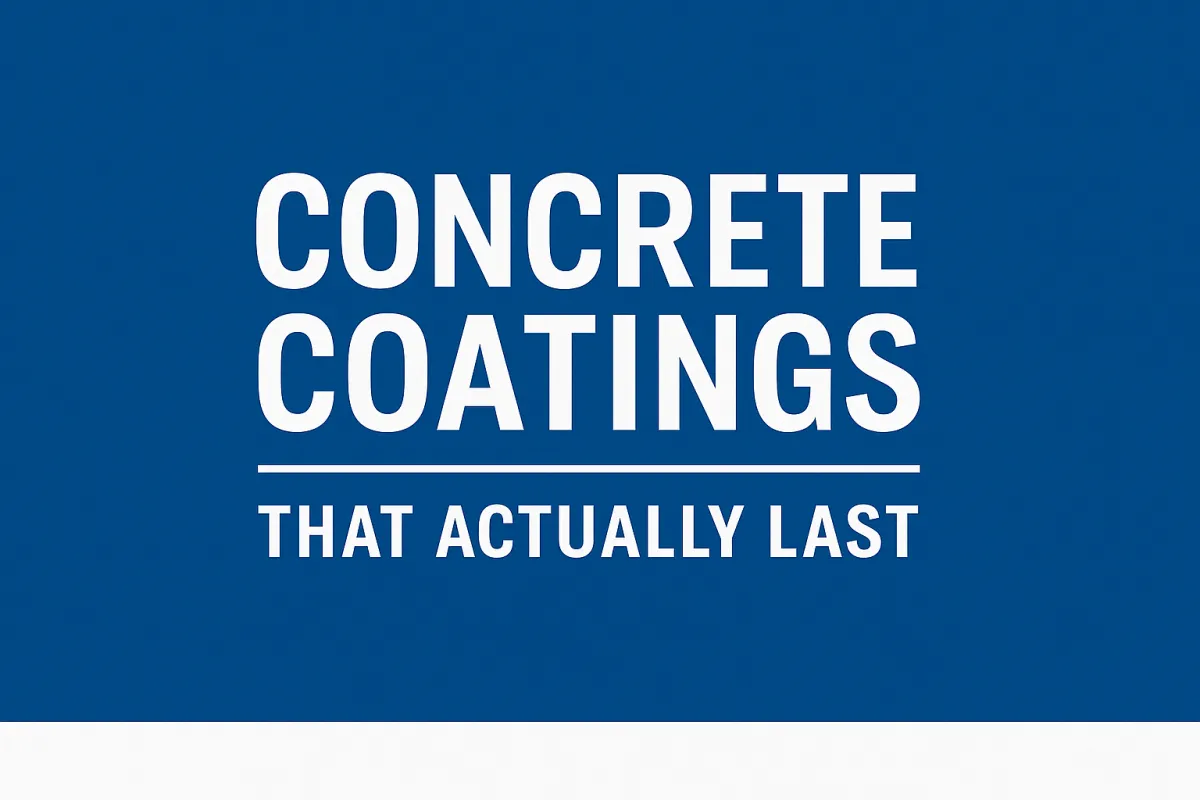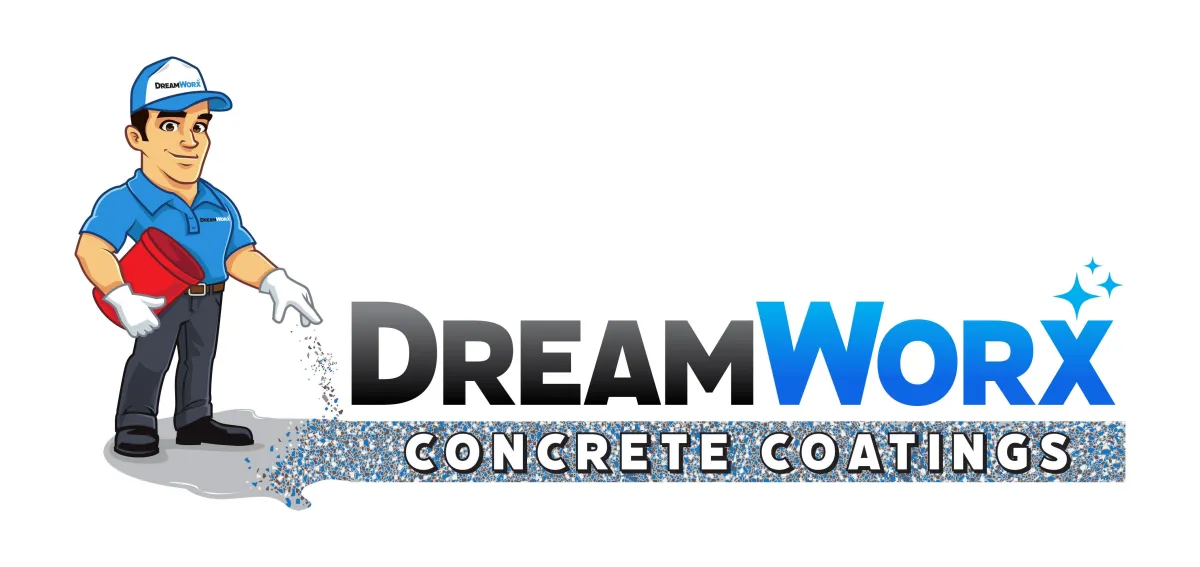
Concrete Coatings That Actually Last: Polyaspartic vs. Epoxy Explained
“Concrete is durable—until it isn’t.”
That quote from a contractor in Minnesota stuck with us. Because it’s true. Midwest concrete doesn’t just wear out—it gets assaulted by salt, snow, hot tires, freeze-thaw chaos, and the occasional DIY experiment gone wrong.
If your garage floor looks like a cracked battlefield, your patio’s flaking like old paint, or your basement still gives off that gritty, unfinished vibe—you’re not alone. And you’re not stuck either.
This guide breaks down exactly which concrete coatings are worth your money (and which ones to avoid). We'll walk you through pro-grade options like polyaspartic, epoxy, and flake systems—and why what works in Arizona won't survive a January in Iowa.
If you want a coating that holds up and looks clean—not just for months, but for years—read on. You're about to skip the gimmicks and get the facts.
We’ll cover:
The different types of concrete coatings and how they perform
What holds up best in cold climates like the Midwest
How to avoid costly mistakes with DIY kits
Which coatings look the best and last the longest
Let’s get into it.
What Is a Concrete Coating? (And Why Your Floor Needs One)
Let’s start with a simple truth: raw concrete doesn’t last forever.
It cracks. It stains. It wears down faster than you’d expect, especially in the Midwest where salt, snow, and shifting temperatures are part of the deal. That’s where concrete coatings come in.
A concrete coating is a tough, often beautiful layer that protects and upgrades your concrete. It’s not just about looks, it’s about performance and peace of mind.
Here’s what the right coating can do:
Prevent cracks, stains, and wear that come from everyday use and harsh weather
Add slip resistance, so you’re not sliding around with wet boots or snow melt
Transform the look with colors, flakes, or a seamless satin finish
Extend the life of your concrete by shielding it from water, chemicals, salt, and abrasion
Whether you’ve got a stained garage, a dusty basement, or a patio that’s seen better days, coatings give those spaces a second life. They make your floor not just usable, but reliable.
What Are the Best Concrete Coatings Available Today?
1. Polyaspartic Floor Coatings
Let’s call it what it is: the king of concrete coatings.
Polyaspartic coatings are fast-curing, ultra-durable, and built to handle Midwest weather without flinching. They bond tighter than traditional epoxy, resist fading, and shrug off chemicals and salt like it’s nothing.
Why pros (and homeowners) love it:
Cures even when temps drop, great for year-round installs
Doesn’t yellow or peel like epoxy
Handles salt, moisture, and chemical exposure
Walk on it in a few hours, drive on it in a day
If you want the job done fast and done right, this is your system.
2. Epoxy Floor Coatings
Epoxy has been around forever, and for good reason. It’s strong, shiny, and can look stunning with the right finish. But it’s not without its quirks.
Best for: indoor spaces that stay climate-controlled. Think basements, rec rooms, or light-use commercial spots.
Upsides:
Budget-friendly
Great decorative finishes (like metallic or solid color)
Adds gloss and color depth
Watch out for:
Long cure times (you’ll be waiting a few days before it’s ready)
Prone to peeling in cold temps or high humidity
UV exposure can cause yellowing over time
If you’re coating a space that stays dry and out of the sun, epoxy might be all you need. Just don’t expect it to handle snow and slush without backup.
3. Flake or Chip Systems
Want something that hides dirt, grips your boots, and still looks sharp? Go flake.
Flake systems, also known as chip floors, combine vinyl flakes with a tough base coat (usually epoxy or polyurea) and seal the whole thing with a polyaspartic top layer.
Best for: Garages, patios, shop floors, anywhere that needs both traction and style.
Why they work:
Textured surface = slip resistance
Flakes mask scuffs, stains, and wear
Customizable colors let you match your space
These aren’t just for looks. A good flake system adds safety, durability, and design to any floor. And the topcoat locks it all in.
What Is the Best Concrete Coating for Cold Climates?
If you’ve ever dealt with Midwest winters, you know they’re brutal, not just on your nerves, but on your concrete too. Snow, ice, freeze-thaw cycles, and de-icing salts? They’re relentless.
This is where most coatings fail. Cracks creep in. Peeling starts. Moisture seeps under the surface. But not with polyaspartic.
Polyaspartic systems were made for this.
They bond deep into the concrete, flex with temperature swings, and cure quickly, even when it’s cold enough to see your breath. You can apply them in temps as low as 20°F. Yes, even in the dead of winter.
What’s more, the primers we use are moisture-tolerant. That means no bubbling, no delaminating, and no mystery failures just because your garage got damp overnight.
If you’re in Minnesota, Wisconsin, or Iowa, this is the coating that holds up. It was engineered for freeze-thaw punishment. And it shows.
Your concrete doesn't need another seasonal band-aid. It needs armor. Polyaspartic gives you that and more.
Can You Apply Concrete Coatings in Winter?
Yes, if you're using the right product and prep.
What to watch for:
Ambient temperature: use polyaspartic with cold-weather additives
Surface moisture: ensure proper moisture testing and mitigation
Professional installation: timing and cure rates matter more in cold temps
DIY kits rarely account for these conditions, which leads to failures.
Are DIY Concrete Coating Kits Worth It?
Short answer: usually not.
Why most fail:
Poor surface prep (no diamond grinding)
Low-grade epoxy that can’t handle salt, snow, or UV
No warranty or accountability
If you’re investing in a long-term solution, a pro install saves money and frustration in the long run.
How Much Do Concrete Coatings Cost?
Average range: $6 to $12 per square foot (varies by system and surface prep needed)
Factors that affect cost:
Type of coating (polyaspartic is more premium)
Surface condition (cracks, moisture, previous coatings)
Size and use of the space (residential vs. commercial)
Most pro companies (like us) offer free on-site estimates to give you a real number, not a vague range.
What Concrete Coating Lasts the Longest?
Polyaspartic coatings with a flake system top the list. They resist:
Abrasion from vehicles and foot traffic
Salt, oil, and chemical spills
UV exposure and yellowing
Many companies back these with a 10+ year warranty, ours included.
Choosing the Right Concrete Coating for Your Space
Here’s the truth: the “best” floor coating doesn’t exist. Not in a one-size-fits-all kind of way.
It all depends on your space, your goals, and how you plan to use it. So let’s break it down clearly.
If you want to use your space fast? Go polyaspartic. It cures quickly, usually in a day. That means less downtime and more living (or working) on your terms.
On a tighter budget and coating a basement or low-traffic indoor area? Epoxy is solid. Just make sure it’s indoors and protected from sun, salt, and moisture. Otherwise, it won’t last.
Need extra grip and don’t want to see every speck of dirt? A flake system is your friend. It adds traction, hides scuffs, and lets you customize your finish with colors that fit your style.
Live in a cold climate? Polyaspartic again, hands down. Or opt for a hybrid system that can flex with freeze-thaw cycles and still look sharp.
One bonus tip before you hire anyone: Ask these three questions:
What surface prep do you use (diamond grind or acid etch)?
What kind of topcoat is included (and is it UV stable)?
Do you warranty the floor, and for how long?
Because the product is only half the equation. The installer, and their process, makes or breaks the job.
Want help choosing the right floor for your space? Book a free estimate now.

